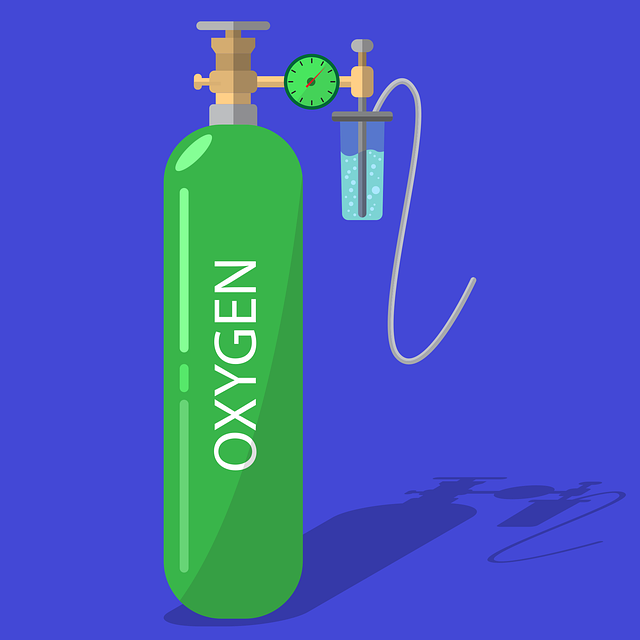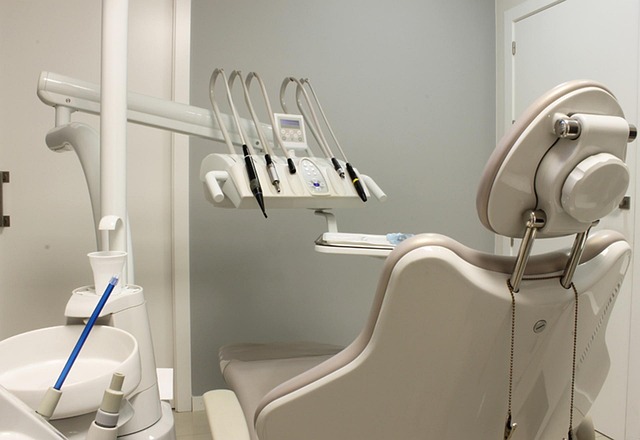Post-operative healing presents challenges like pain, inflammation, scarring, and tissue damage. Traditional methods manage symptoms but don't address underlying needs. Regenerative post-surgery treatments, leveraging advanced technologies and natural compounds, stimulate the body's natural healing processes, reduce inflammation, support tissue repair, and encourage healthy cell growth. Non-invasive solutions like platelet-rich plasma (PRP) therapy and low-level laser therapy offer faster recovery times, reduced pain, and improved patient satisfaction compared to traditional methods. Integrating these holistic regenerative treatments into healthcare practices prioritizes patient safety, speeds recovery, reduces risks, and enhances overall well-being.
Post-operative healing presents unique challenges, often requiring efficient and effective solutions. In response, non-invasive regenerative treatments have emerged as game-changers in healthcare. This article explores innovative strategies for enhancing post-surgery recovery, focusing on advanced technologies in tissue repair and the benefits of selected techniques. From understanding the complexities of healing to integrating these solutions into medical practice, discover how regenerative post-surgery treatments are revolutionizing patient care.
- Understanding Post-Operative Healing Challenges
- The Rise of Non-Invasive Regenerative Treatments
- Advanced Technologies in Tissue Repair
- Benefits and Safety Profiles of Selected Techniques
- Integrating Non-Invasive Solutions into Healthcare Practice
Understanding Post-Operative Healing Challenges

Post-operative healing presents unique challenges, often requiring a delicate balance between promoting recovery and minimizing patient discomfort. Many surgical procedures lead to various adverse effects, including pain, inflammation, scarring, and potential tissue damage. Traditional healing methods focus on managing these symptoms, but they may not always address the underlying needs of the body during the regenerative post-surgery treatments phase. Understanding these challenges is crucial for developing effective non-invasive solutions that enhance recovery and patient satisfaction.
Regenerative treatments offer a promising approach by stimulating the body’s natural healing processes. These methods aim to reduce inflammation, support tissue repair, and encourage the growth of new, healthy cells. By utilizing advanced technologies and natural compounds, healthcare professionals can navigate the complexities of post-operative care, ensuring patients receive tailored regenerative post-surgery treatments for optimal recovery outcomes.
The Rise of Non-Invasive Regenerative Treatments

The field of medicine is witnessing a significant shift towards non-invasive regenerative treatments as game-changers in post-operative healing. This growing trend reflects a profound understanding of the body’s natural healing processes and the desire to enhance them without introducing additional risks or side effects often associated with invasive procedures. Non-invasive regenerative therapies offer a promising alternative for patients, especially those seeking faster recovery times and improved outcomes without surgery.
Regenerative post-surgery treatments leverage advanced technologies and natural mechanisms to stimulate tissue repair and regeneration. From platelet-rich plasma (PRP) therapy, which utilizes a patient’s own blood to accelerate healing, to low-level laser therapy, these innovative solutions are revolutionizing post-operative care. By promoting the body’s inherent ability to heal itself, these treatments can lead to reduced scarring, minimized pain, and accelerated recovery, ultimately improving patients’ overall satisfaction and quality of life.
Advanced Technologies in Tissue Repair

In the realm of modern medicine, advanced technologies have emerged as game-changers in facilitating post-operative healing through regenerative post-surgery treatments. Innovations such as platelet-rich plasma (PRP) therapy and tissue engineering offer non-invasive solutions that promote tissue repair and regeneration. PRP, derived from a patient’s own blood, contains growth factors that stimulate cellular proliferation and enhance wound healing. It has been successfully used in various surgical specialties to accelerate recovery and improve clinical outcomes.
Tissue engineering, on the other hand, involves the use of scaffolds, cells, and bioactive factors to create functional tissues and organs. This cutting-edge approach enables the reconstruction of damaged tissues, offering hope for complex healing processes. By combining advanced technologies with personalized medicine, healthcare professionals are able to provide more effective and efficient regenerative post-surgery treatments, ultimately enhancing patient recovery and quality of life.
Benefits and Safety Profiles of Selected Techniques

The benefits and safety profiles of selected non-invasive techniques for post-operative healing are attracting increasing interest in the medical community, especially when considering regenerative post-surgery treatments. Innovations such as platelet-rich plasma (PRP) therapy offer a rich source of growth factors to accelerate tissue repair and reduce inflammation. This minimally invasive procedure has shown promising results in various surgical specialties, from orthopedic procedures to plastic surgeries, by fostering an environment conducive to cell proliferation and collagen synthesis.
Another notable technique is low-level laser therapy (LLLT), which utilizes specific wavelengths of light to stimulate cellular functions. LLLT has demonstrated efficacy in promoting angiogenesis, reducing scar formation, and enhancing overall healing outcomes without significant side effects. These non-invasive solutions present attractive alternatives to traditional postoperative care, offering faster recovery times, reduced pain, and improved patient satisfaction.
Integrating Non-Invasive Solutions into Healthcare Practice

Integrating non-invasive solutions into healthcare practice is a significant shift towards more holistic and patient-centric care, particularly in the realm of post-operative healing. These regenerative post-surgery treatments offer a promising alternative to traditional methods, focusing on the body’s natural ability to heal itself. By embracing innovative technologies like light therapy, ultrasound, and stem cell therapies, healthcare professionals can enhance recovery outcomes while reducing risks associated with invasive procedures.
Such integration streamlines patient care, making it more accessible and cost-effective. For instance, light-based therapies have been shown to reduce inflammation and promote tissue regeneration, while ultrasound facilitates faster wound healing by improving blood circulation. As these non-invasive solutions gain traction, healthcare practices can expect improved patient satisfaction, shorter hospital stays, and better overall recovery for post-surgery patients.
The evolution of non-invasive regenerative treatments offers a promising path forward for post-operative healing, addressing the challenges outlined in this article. Advanced technologies like platelet-rich plasma (PRP), low-level laser therapy, and 3D bioprinting are transforming tissue repair, providing safe and effective alternatives to traditional methods. Integrating these innovative regenerative post-surgery treatments into healthcare practice can enhance patient outcomes, reduce recovery times, and improve overall satisfaction, paving the way for a future where non-invasive solutions become the standard of care.
